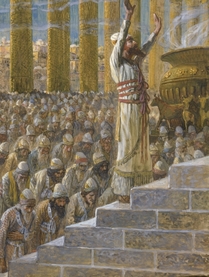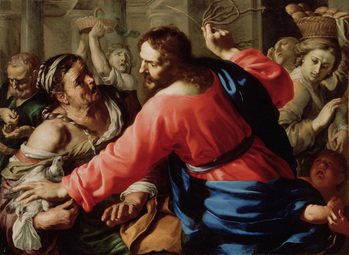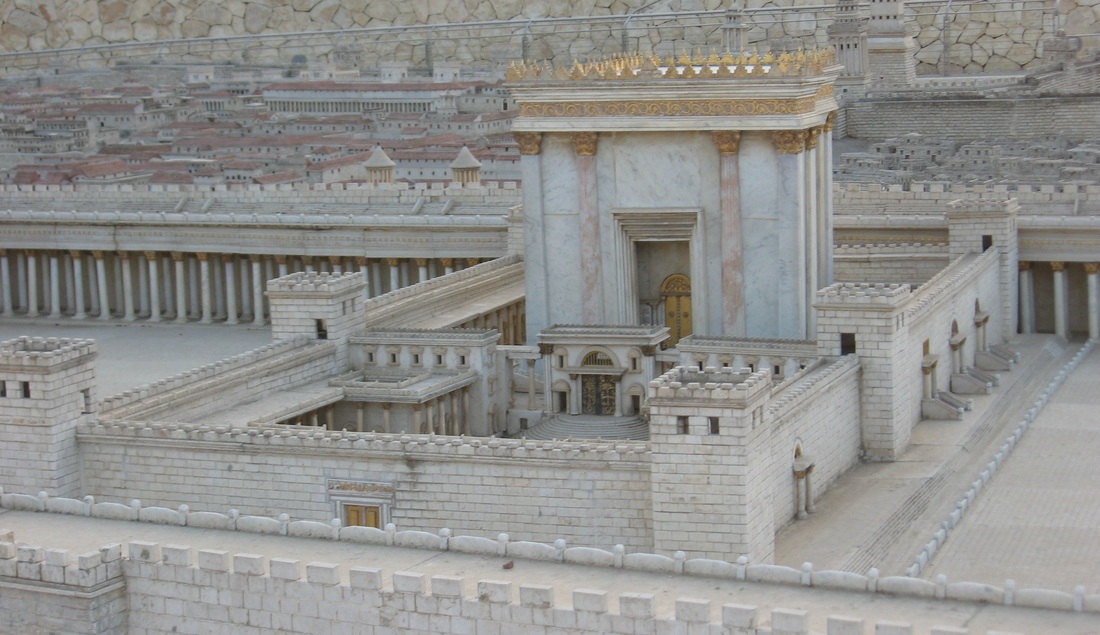The Temple in Jerusalem was the centre of Jewish religious life. It was used as a place of worship for major religious festivals and as a place of prayer. There would be daily services there. It was also a place of sacrifice where sins could be confessed and guilt transferred symbolically to an animal which was then slaughtered and burnt as an offering to God. The animal had to be unblemished; the best of the flock or herd. Poor people could sacrifice birds if that was all that they could afford.
 Image: wikipedia.commons
Image: wikipedia.commons  Image: wikipedia.en
Image: wikipedia.en Sometime during what Christians now call “Holy Week” – the final week before Jesus’ crucifixion - Jesus created a major disturbance in the Court of the Gentiles. The Gospels report that he violently overturned the money-changers’ tables and the booths of the sellers of animals. In a way, each had a legitimate place in the temple. The animals were needed by those who could not supply their own. The temple money alone could be used to pay the temple tax (Roman money was considered pagan and unclean). Mark’s Gospel records that Jesus regarded the temple as ‘a den of robbers’. Perhaps they were guilty of ripping off the people who came. At any rate, quoting the O.T. Jesus said that God wanted it to be a place of ‘prayer for all nations’. Clearly the Court of the Gentiles had gradually become full of traders and money changers and prayer was not possible. So the Temple was not fulfilling its most important function – to unite Man and God.
By creating this disturbance, Jesus was challenging the whole temple system. He knew exactly what he was doing. His ‘riot’ was deeply symbolic. He regarded the system as rotten at its core and perhaps in need of total reform which was really unlikely to happen. He later predicted (to his disciples) the complete destruction of the Temple, something that did in fact happen in AD 70 at the hands of the Romans. Many people at the time regarded the priests as corrupt in any case (many were very wealthy) and Jesus may well have shared that view. Sick and deformed people were not allowed in. He would have been seen as a threat to the moral and spiritual authority of the priests.
Jesus spent a lot of time in The Temple once he came to Jerusalem. Its courts were a place where people gathered to discuss and argue about matters of faith and belief. Mark records a number of disputes that Jesus had with religious leaders. More controversy!



 RSS Feed
RSS Feed
